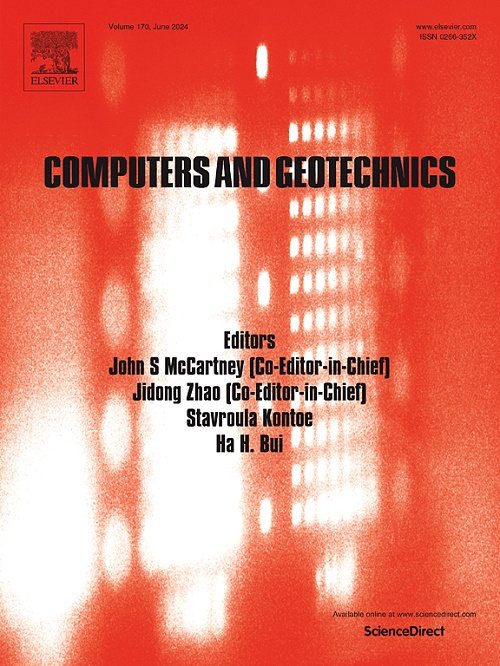Interpretative framework for CPT p-y module tests in drained sands: a practical model for end effect elimination considering sand relative density and surcharge pressure
IF 5.3
1区 工程技术
Q1 COMPUTER SCIENCE, INTERDISCIPLINARY APPLICATIONS
引用次数: 0
Abstract
Accelerating the current timeline of offshore wind projects is imperative to achieve global decarbonisation plans. In response, a novel in-situ site characterisation tool ROBOCONE is being developed to make the geotechnical design of offshore pile foundations more efficient by directly providing lateral p-y response data, reducing the need for offshore sampling and onshore laboratory testing. This device expands the kinematic range of standard cone penetrometer testing by integrating a robotic cylindrical section capable of horizontal translation, referred to as a p-y module. However, due to the finite length of p-y module, it is necessary to quantify ‘end effects’ to accurately derive p-y curves from the direct measurements of the p-y module. This paper presents detailed three-dimensional finite element analyses of the p-y module in sands, utilizing a bounding surface elastoplastic model that accounts for variations in stress–strain behaviour due to relative density and stress level. The resulting end effect model is underpinned by a two-stage optimisation process that considers key factors such as overburden pressure and relative density. The model’s predictive accuracy is proven through additional finite element analyses different to the calibration cases. The research outcomes offer a robust interpretative framework to accurately determine p-y curves for the design of laterally loaded offshore piles, using the ROBOCONE p-y module.
排水砂中CPT p-y模块试验的解释框架:考虑砂相对密度和附加压力的终端效应消除的实用模型
加快目前海上风电项目的时间表对于实现全球脱碳计划至关重要。为此,一种新型的现场表征工具ROBOCONE正在开发中,通过直接提供横向p-y响应数据,减少了海上取样和陆上实验室测试的需要,从而提高了海上桩基的岩土工程设计效率。该装置通过集成一个能够水平平移的机器人圆柱形部分(称为p-y模块),扩展了标准锥形贯深仪测试的运动范围。然而,由于p-y模的长度有限,有必要量化“末端效应”,以准确地从p-y模的直接测量中得出p-y曲线。本文利用边界面弹塑性模型对砂土中的p-y模组进行了详细的三维有限元分析,该模型考虑了相对密度和应力水平导致的应力-应变行为变化。最终的最终效果模型是由两阶段优化过程支撑的,该过程考虑了覆盖层压力和相对密度等关键因素。通过与标定实例不同的附加有限元分析,验证了模型的预测精度。研究结果提供了一个强大的解释框架,可以使用ROBOCONE p-y模块准确确定横向加载海上桩的p-y曲线。
本文章由计算机程序翻译,如有差异,请以英文原文为准。
求助全文
约1分钟内获得全文
求助全文
来源期刊

Computers and Geotechnics
地学-地球科学综合
CiteScore
9.10
自引率
15.10%
发文量
438
审稿时长
45 days
期刊介绍:
The use of computers is firmly established in geotechnical engineering and continues to grow rapidly in both engineering practice and academe. The development of advanced numerical techniques and constitutive modeling, in conjunction with rapid developments in computer hardware, enables problems to be tackled that were unthinkable even a few years ago. Computers and Geotechnics provides an up-to-date reference for engineers and researchers engaged in computer aided analysis and research in geotechnical engineering. The journal is intended for an expeditious dissemination of advanced computer applications across a broad range of geotechnical topics. Contributions on advances in numerical algorithms, computer implementation of new constitutive models and probabilistic methods are especially encouraged.
 求助内容:
求助内容: 应助结果提醒方式:
应助结果提醒方式:


